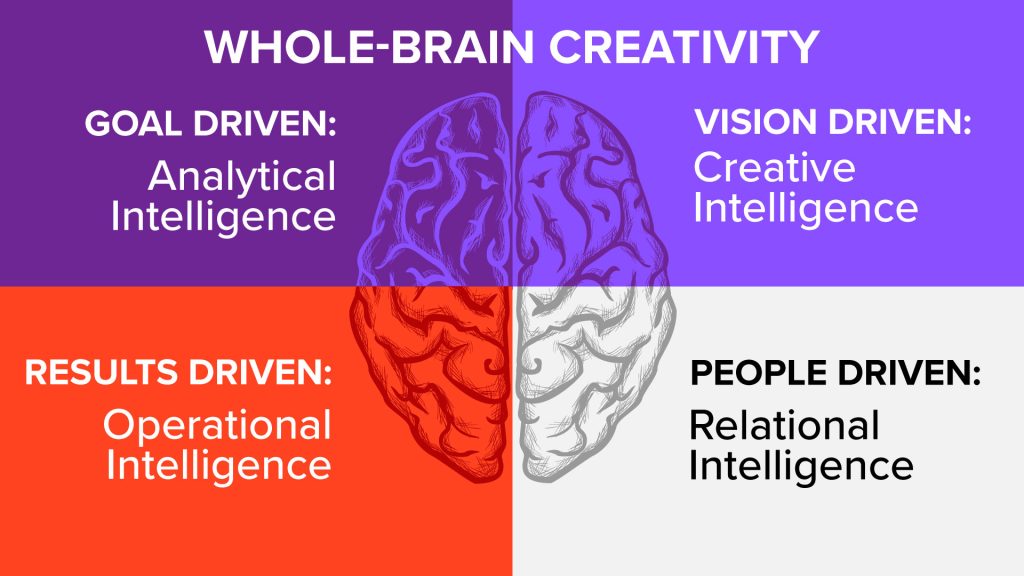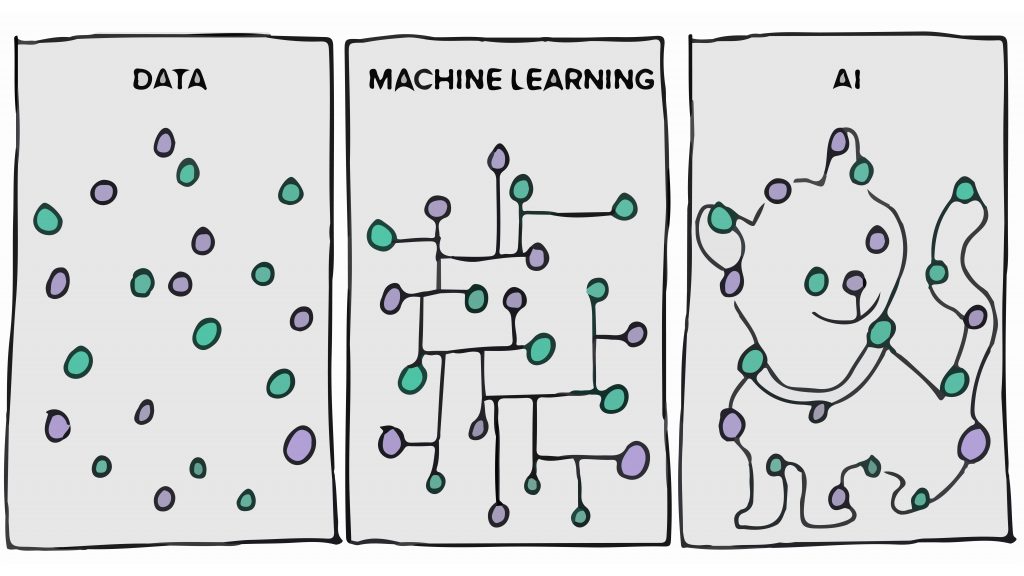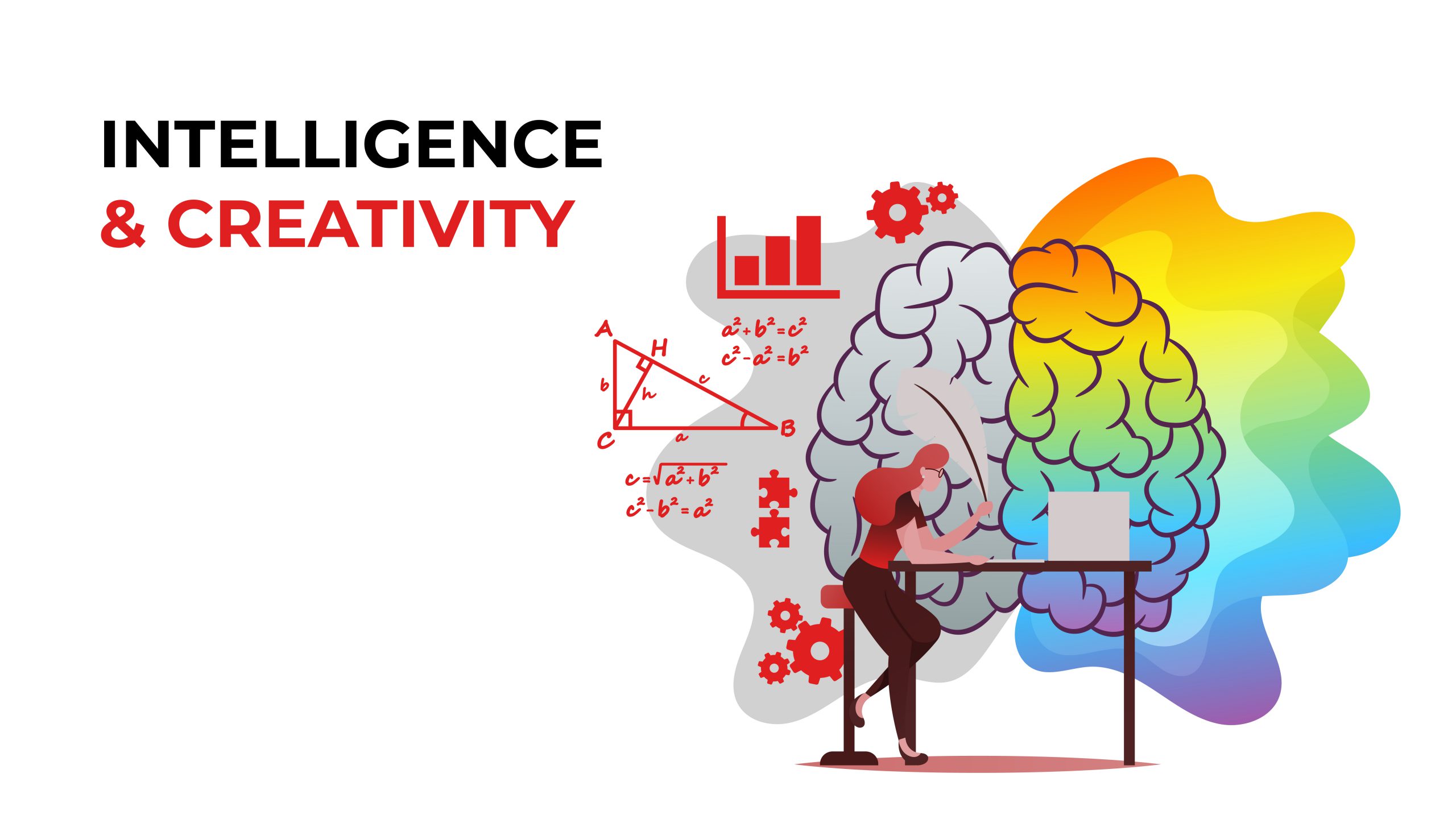When you think of marketing campaigns, what do you think of? Big-budget Super Bowl commercials built to make the audience laugh? Or spreadsheets upon spreadsheets of metrics and analytics?
Today’s smart marketers know that it’s a blend of both creativity and intelligence, not just one or the other, that leads to real results.
Collecting and analyzing the data is the first step, but coming up with creative solutions and strategies is also an important part of the puzzle. Your campaign isn’t always going to be a showstopping ad. Often the most impactful changes you can make are the small tweaks that contribute to an overall amazing user experience. Make life easier for your customers, and they’ll come back time and time again.

The Four Types of Intelligence
Before we get into what this process looks like, let’s talk about intelligence. This can refer to intelligence in its simplest form (using your brain as you examine and analyze problems) or can get into artificial intelligence (AI), which we’ll discuss later on.
For the former, we categorize it into four intelligence types:
- Analytical intelligence includes how you frame a problem. It also refers to how you evaluate an idea, including critical thinking.
- Artistic intelligence includes using your imagination, visual thinking, and how you envision possibilities.
- Relational intelligence includes how your idea connects or impacts others within a system and how you collaborate and co-create with others.
- Operational intelligence includes planning and organizing and how you turn an idea into action.
Some even expand into further categories, like with the nine types of intelligence categorized in this article: naturalist, musical, logical-mathematical, existential, interpersonal, bodily-kinesthetic, linguistic, intra-personal, and spatial.
All of these ways of thinking should be part of a marketer’s toolbelt.

Creativity vs. Creative Intelligence: What’s the Difference?
Next, add in a little creativity. But again, we’re not necessarily talking about artistic masterpieces here. Creative intelligence refers to your ability to understand problems and find solutions based on your existing knowledge and skills.
A successful content marketer, for example, will know how to quickly scan a list of keywords and monthly search volumes (data) and ideate some creative topics for blogs, videos, or eBooks. It’s an Account Manager’s ability to call out a client’s dropping conversion rate, and brainstorm a holistic campaign that incorporates SEO, PPC, and social media elements.

Whole Brain Creativity
Another way to think about creative intelligence is in terms of “whole brain creativity.” Instead of focusing on just your right-brain (the more artsy side) or your left-brain (the more logical side), whole brain creativity uses—you guessed it—both sides to stimulate holistic thinking. One without the other is risky, as it can lead to one-sided campaigns.

Combining Creativity and Intelligence with Data
So, what does blending the two look like? We’ve discussed data-driven marketing on the blog before, so let’s start there.
Once you’ve collected and analyzed your data, whether that’s from Google Analytics, your social media platforms, or any of the other data sources we’ve discussed in the past, it’s time to act on those insights.
If your bounce rate is high on a specific page, for example, you might want to dig into the creative aspects of the copy. Maybe it’s not really speaking to your target audience well, or maybe it’s a little outdated and needs to be updated. Or maybe it’s not your copy at all. If there’s a formatting or layout issue, your users might just be getting annoyed. Using your existing knowledge, you can decide what to A/B test.
Another one-two punch of creativity and intelligence is the use of personalization and customization, as we discussed with data-driven web design. When your site can collect and store specific metrics and historical actions your users have taken, you can create a seamless experience built just for them.
Combining Creativity and Intelligence with AI
Yet another place we see the combination of creativity and intelligence is with AI. From voice assistants who know your daily routine to product recommendations when you first pull up Amazon, AI in marketing is a powerful strategy.
Moreover, users have come to expect it. Unnecessary friction will just cause your customers to abandon you and find the next best (and more user-friendly) platform, tool, or product.
AI can also help you avoid mundane tasks, allowing marketers to spend their time wisely and keep their creativity intact for when they need it most. Facebook ads that optimize your spend automatically are a great example of this. Instead of monitoring each and every ad, every second of the day, you can rely on Facebook’s intelligence to ensure your best-performing ads continue to get exposure.
In the race to getting the right message in front of the right person at the right time, AI clearly helps us win.

Examples of Creativity & Intelligence in Marketing
Want to see more of this concept in play? Two of our favorite examples are Netflix and Home Depot.
Entertainment-giant Netflix uses tons of data to help them make creative decisions. This is apparent at the user-level (e.g. recommending similar movies and TV shows for a user to watch, based on their history and other algorithmic factors) as well as larger-scale production decisions. This kind of data, after all, is what led them to create the 2013 hit show “House of Cards”. Netflix correctly estimated that it would be a slam-dunk, based on data they had about subscribers and the types of shows, directors, and actors that would combine into a hit.
Home Depot is another example. They’ve taken a unified approach to their marketing, combining data from both online and in-store experiences to drive the customer journey. Customers can use the Home Depot app to create their shopping list and find product details, while also using it as an in-store assistant, guiding them to the right aisle and bin number. The result? The user quickly gets what they need, and the company earns a 360-view of them as a customer.

The Perfect Recipe for Creativity and Data Intelligence
With the rise of data-driven marketing and AI, it’s clear that a relationship between creativity and intelligence is the future. You can’t have one without the other and need to leverage both to power your marketing strategy.
